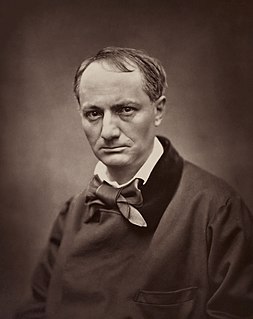
Charles Pierre Baudelaire was a French poet who also produced notable work as an essayist and art critic. His poems exhibit mastery in the handling of rhyme and rhythm, contain an exoticism inherited from Romantics, but are based on observations of real life.

Comte de Lautréamont was the nom de plume of Isidore Lucien Ducasse, a French poet born in Uruguay. His only works, Les Chants de Maldoror and Poésies, had a major influence on modern arts and literature, particularly on the Surrealists and the Situationists. Ducasse died at the age of 24.

Les Fleurs du mal is a volume of French poetry by Charles Baudelaire.

Carlos Schwabe was a Swiss Symbolist painter and printmaker.
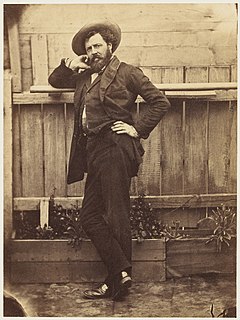
Antoine Julien Nicolas Fauchery was a French adventurer, writer and photographer with republican sympathies. He participated in the national uprising in Poland in 1848, opened a photographic studio in Melbourne, Australia, in 1858, and was commissioned to accompany the French forces as they progressed to Beijing during the last stage of the Second Opium War in 1860. He wrote thirteen long dispatches from the front-line for le Moniteur, the official French government newspaper. He died in Yokohama of dysentery.
Michel, chevalier de Cubières was an 18th-century French writer, known under the pen-names of Palmézaux and Dorat-Cubières, taking the latter name as he had Claude Joseph Dorat as his master.

Monsieur de Pourceaugnac is a three-act comédie-ballet—a ballet interrupted by spoken dialogue—by Molière, first presented on 6 October 1669 before the court of Louis XIV at the Château of Chambord by Molière's troupe of actors. Subsequent public performances were given at the theatre of the Palais-Royal beginning on 18 November 1669. The music was composed by Jean-Baptiste Lully, the choreography was by Pierre Beauchamp, the sets were by Carlo Vigarani, and the costumes were created by the chevalier d’Arvieux.
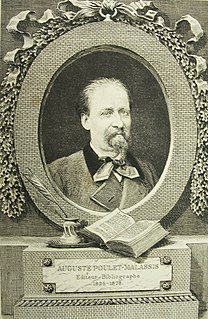
Paul Emmanuel Auguste Poulet-Malassis was a French printer and publisher who lived and worked in Paris. He was a longstanding friend and the printer-publisher of Charles Baudelaire.

Georges Chelon is a French singer and songwriter. He was made a member of the Ordre des Arts et des Lettres in 1985.

Pierre Albéric Second, was a 19th-century French journalist, novelist and playwright.
Fernand Desnoyers, full name Félix-Emile-Arthur Desnoyers, was a 19th-century French writer and literary critic.
Jean-Claude Gorgy was an 18th-century French playwright. Jean-Claude Gorgy was the son of a valet to the Count de Maillebois. He himself became secretary of the count.

Ernest Hamel (1826-1898) was a French lawyer, poet, historian, journalist and politician. He served as a member of the French Senate from 1892 to 1898, representing Seine-et-Oise.

The French alexandrine is a syllabic poetic metre of 12 syllables with a medial caesura dividing the line into two hemistichs (half-lines) of six syllables each. It was the dominant long line of French poetry from the 17th through the 19th century, and influenced many other European literatures which developed alexandrines of their own.
Le prix Ève-Delacroix is one of the prizes bestowed by the Académie française. The award which was established in 1977 by the Ève-Delacroix foundation is intended "for the author of a work combining literary qualities with the meaning of the dignity of man and the responsibilities of the writer".
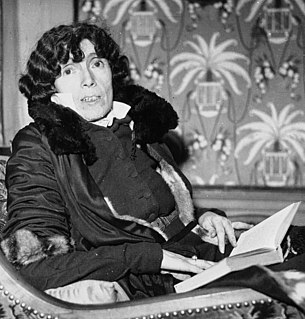
Louise Hervieu was a French writer, artist, painter, draftsman, and lithographer.
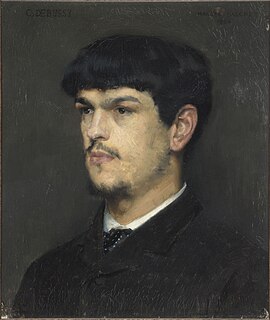
The Cinq poèmes de Charles Baudelaire constitute a song cycle for voice and piano by Claude Debussy, on poems taken from Les Fleurs du mal by Charles Baudelaire. Composed from December 1887 to March 1889, these five highly developed vocal pieces were not well received by Parisian musical circles because of the Wagnerian influence they revealed.
Guillot or Guiot of Paris was a late 13th or early 14th century French poet, author of the Le Dit des rues de Paris.

Charles Asselineau was a French writer and art critic. He is also notable as one of the few close friends of the poet Charles Baudelaire. He was born in Paris and died in Châtel-guyon.

Edmond Malassis was a French painter and illustrator.















